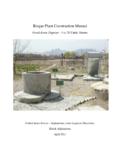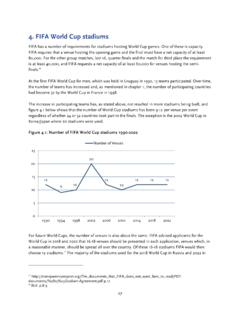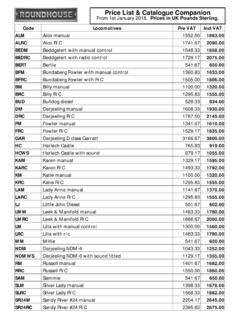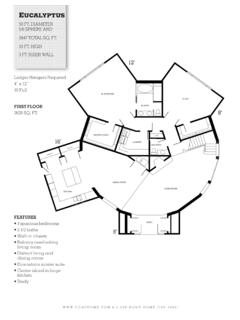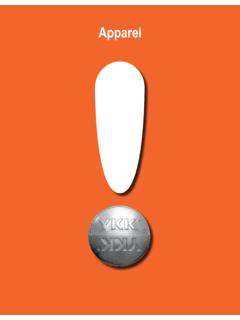Transcription of Extended Range Beryllium Dome Diaphragm Assembly for …
1 Copyright 2011 Materion Brush Inc. Extended Range Beryllium dome Diaphragm Assembly for Large Format Compression Drivers Marshall Buck1, Peter Andrews2, Gordon Simmons2 and Sam Saye2 1 Psychotechnology, Inc, Los Angeles, CA 90034, USA 2 Materion Electrofusion, Fremont, CA 94538, USA ABSTRACT The development, manufacture, and testing of a new large format compression driver Diaphragm using a Beryllium dome and new type of polymer surround is detailed that exhibits improved performance. This design promises to give long life and good reliability with little or no change in performance anticipated over the life of the Diaphragm . Design exercises include material properties comparisons, finite element analysis, and modal simulations. A comprehensive set of tests of Beryllium , aluminum, and titanium Diaphragm compression drivers is described including frequency response, distortion, wavelet time domain analysis on a 2 inch plane wave tube and laser scans of modes.
2 Substantial differences were measured in the performance categories, particularly in the frequency Range above 4kHz. 1. INTRODUCTION This paper presents a rationale for the use of Beryllium as the material for the Diaphragm of a high frequency electroacoustic transducer. The material properties of Beryllium are compared with aluminum and titanium and are found to be superior for this purpose. Other components of the Assembly , which is designed to retrofit many standard two inch exit compression drivers, are also addressed for improvements, such as the voice coil and the surround. Manufacturing processes are described, and reliability testing results are given. Comprehensive acoustic testing data on a terminated tube are presented comparing the three materials. Laser scans show modal behavior of the three diaphragms. 2. HISTORY OF Beryllium AS A Diaphragm MATERIAL Beryllium is a rare and unique metal which is used in a number of high technology industries including medical, aerospace, and high-energy physics.
3 Applications for Beryllium include x-ray components used in healthcare, scientific instruments used for advancing our understanding of the deepest laws of nature, satellite structures and aircraft components. Buck, et al. Extended Range Beryllium dome Diaphragm ALMA Europe Symposium 09 April, 2011 Page 2 of 26 Beryllium has also played a significant role in high performance audio transducers. For many decades, it has been used in phonograph cartridges, and around 1977 a major Japanese audio company introduced loudspeakers containing Beryllium . These Beryllium transducers were used for several years in studio monitors and high performance home loudspeakers. They attained almost a cult status and are still sought after today. At about the same time, another leading Japanese audio company introduced compression drivers and direct radiators which contained Beryllium diaphragms, many of which are still widely used today.
4 Both companies produced their Beryllium diaphragms by a process called physical vapor deposition (PVD). 3. Diaphragm MATERIAL PROPERTIES The table below summarizes the key properties of aluminum, titanium, and Beryllium . Note that different reference sources give some variations to the properties in this table. Descriptions of the key features are provided below. Table 1: Comparison of Aluminum, Titanium and Beryllium Property Aluminum Titanium Beryllium Density, 2,700 kg/m3 4,500 kg/m3 1,850 kg/m3 Young s Modulus, E 71 x 109 Pa 116 x 109 Pa 310 x 109 Pa Poisson s Ratio, Speed of Sound, c 5,128 m/s 5,077 m/s 12,945 m/s Tensile Strength 90 x 106 Pa Yield 140 x 106 Pa Yield 240 x 106 Pa Yield Bending Modulus (re Al) 1st Bending Mode (re Al) Density The density of a material, , is defined as the mass per unit volume or = m/V, where m = mass and V = volume.
5 For a given transducer geometry, a lower-mass Diaphragm allows greater acceleration of the moving system (F=ma), increasing both passband efficiency and high-frequency extension (Kinsler Eargle). Young s Modulus This is the ratio of uniaxial stress to strain and is measured in units of pressure. It is defined as E = / , where = stress and = strain. A higher Young s Modulus equates to a stiffer Diaphragm , all other things being equal. A stiffer Diaphragm , of course, does not bend as much in response to an applied force. Thus, at high frequencies, the bending modes are shifted up in frequency, extending the useful bandwidth of the transducer (see further discussion below). Buck, et al. Extended Range Beryllium dome Diaphragm ALMA Europe Symposium 09 April, 2011 Page 3 of 26 Poisson s Ratio When a solid material is compressed in one direction, it tends to expand in the other two directions perpendicular to the direction of compression.
6 This phenomenon is called the Poisson Effect. The Poisson s Ratio (nu) relates the contraction or transverse strain (perpendicular to the applied load), to the extension or axial strain (in the direction of the applied load). Assuming that the material is stretched or compressed along the axial direction: = - d transverse / d axial Where is the resulting Poisson's Ratio, transverse is transverse strain (negative for axial tension, positive for axial compression) axial is axial strain (positive for axial tension, negative for axial compression). The Poisson s Ratio of Beryllium is unusually low. For acoustic applications, a low Poisson s Ratio results in reduced coupling of sound waves from one mode of propagation to another. For example, an axial wave will remain an axial wave transferring less energy to transverse modes of wave propagation. This ability to keep the different modes of propagation separated can be of great importance in acoustics, especially at higher frequencies, or in imaging or surface wave devices (Materion Electrofusion).
7 In other words, a lower Poisson s Ratio better preserves the direction of the applied force. Speed of Sound The speed of sound is the rate of travel of a sound wave through an elastic medium. The speed of sound waves in solids is determined by the material's stiffness and density and may be described by the equation c = E/ . This is generally understood to be the speed of a longitudinal wave along the x-axis of a long bar (where x >> y or z). For the purposes of this discussion, we are interested in the bending modes of a thin plate (x and y >> z) where the displacement of the wave is in the z-axis. The bending stiffness causes the bending wave speed to be different than c. These relationships are detailed below. Tensile Strength Tensile Strength is the property of a material that measures its ability to withstand tensile stress without failure. A material with a higher tensile strength allows a thinner dome to maintain equivalent strength, giving a lower moving mass.
8 Bending Modulus (relative to aluminum) This property describes the stiffness of a thin plate in response to bending forces (similar to Young s Modulus, but in two dimensions). Of course, the actual bending stiffness of a dome shape is highly dependent on the details of that geometry. For this discussion, we separate the material s inherent bending stiffness from the geometry s stiffness by assuming the same thin plate geometry for all materials. For the sake of clarity in the table, these results have been shown relative to the Bending Modulus of the aluminum plate. Buck, et al. Extended Range Beryllium dome Diaphragm ALMA Europe Symposium 09 April, 2011 Page 4 of 26 1st Bending Mode (relative to aluminum) For a given geometry, the frequency of the first bending mode (break-up frequency) is related to the speed of sound in the material. More accurately, the first bending mode varies as (E/ (1- 2)), according to Euler-Bernoulli plate theory (Kinsler & Frey).
9 For the sake of clarity in the table, these results have been shown relative to the 1st Bending Frequency of the aluminum plate. The approximate shape of the 1st bending mode is shown in Figure 1 below. Figure 1. 2D Mode Shape at 1st Bending Frequency of a dome Diaphragm . Summary In summary, from the material properties table above, one can readily see that Beryllium has the lowest mass, the highest stiffness, the lowest Poisson Effect, the highest speed of sound, and the highest tensile strength of the acoustically useful light metals. This excellent combination of properties results in a much higher bending stiffness for any given geometry, and thus a marked increase in the first bending mode frequency of the Diaphragm . What this means to the designer of large format compression drivers is more than an octave of useful frequency Range from the same driver geometry. 4. MANUFACTURING PROCESSES Beryllium is inherently a hard metal, and has a reputation for being brittle in thin structures.
10 However, manufacturing processes can have significant effects on the ductility of Beryllium . There are two processes that are currently used to manufacture Beryllium acoustic components. PVD Beryllium PVD is a process performed in a vacuum and is a general term used to describe any of a variety of methods to deposit thin films by the condensation of a vaporized form of the material onto various surfaces. The coating method involves purely physical processes such as high temperature vacuum evaporation or plasma sputter bombardment. The process used to vapor deposit Beryllium produces a relatively coarse grain structure with grains oriented perpendicular to the plane of the deposited layer. The PVD process also places physical limits on the thickness of the finished Diaphragm . Buck, et al. Extended Range Beryllium dome Diaphragm ALMA Europe Symposium 09 April, 2011 Page 5 of 26 Rolled Beryllium Foil Rolled Beryllium foil is produced using a process which creates a fine metallic grain structure with grains oriented parallel to the direction of rolling.


